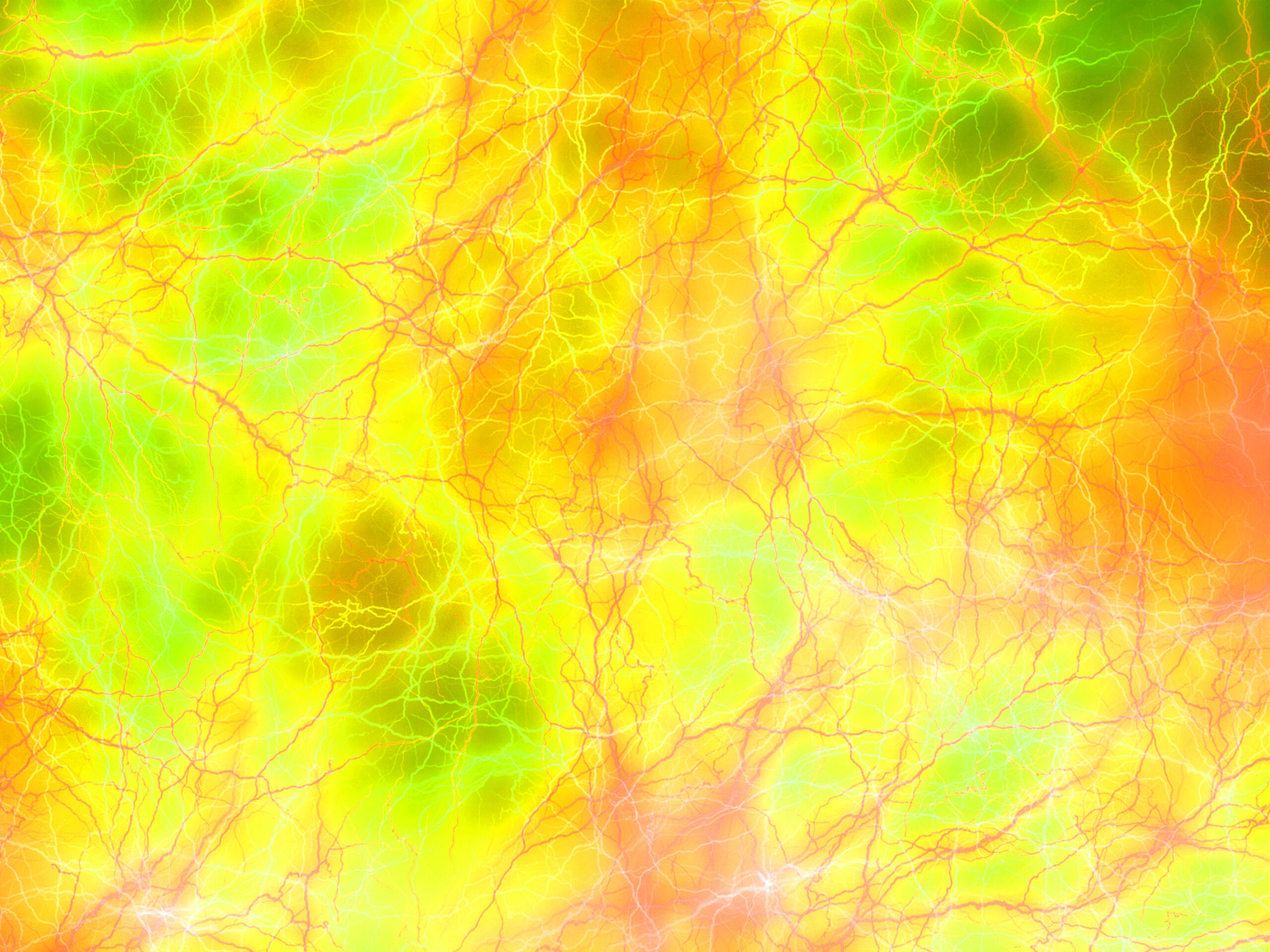
It has been proven with clinical, psychological and electromyographic tests that the hyperventilation (HV) syndrome cannot be separated from so-called genuine tetany. Tetanic patients with and without HV are characterized by a significant hypocalcemia; but a significant hypomagnesemia is exclusively found in tetanic patients with HV attacks. Possible pathogenic mechanisms are discussed which may explain the HV attacks as a consequence of primary magnesium deficiency.
Fehlinger R, Seidel K. The hyperventilation syndrome: a neurosis or a manifestation of magnesium imbalance? Magnesium. 1985;4(2-3):129-36. PMID: 4046641.
I had to look up hyperventilation syndrome…it’s still a thing. In fact, it is another name for tetany among other things.
Hyperventilation syndrome (HVS), also known as chronic hyperventilation syndrome (CHVS), dysfunctional breathing hyperventilation syndrome, cryptotetany, spasmophilia, latent tetany, and central neuronal hyper excitability syndrome (NHS), is a respiratory disorder, psychologically or physiologically based, involving breathing too deeply or too rapidly (hyperventilation). HVS may present with chest pain and a tingling sensation in the fingertips and around the mouth (paresthesia) and may accompany a panic attack.
- Seelig, MS; Berger, AR; Spielholz, N (August 1975). “Latent Tetany And Anxiety, Marginal Magnesium Deficit, And Normocalcemia” (PDF). Dis Nerv Syst. 36 (8): 461–5. PMID 1164868. S2CID 6696448. Archived from the original (PDF) on 2019-09-12.
- “Review and Hypothesis: Might Patients with the Chronic Fatigue Syndrome Have Latent Tetany of Magnesium Deficiency”.
- “Spasmophilia in the Cardiological Outpatient Department: A Retrospective Study of 228 Sub-saharan Africans over 5 Years”. ResearchGate. Retrieved 2019-09-14.
- Toruńska, Katarzyna (May 2003). “[Tetany as a difficult diagnostic problem in the neurological outpatient department]”. Neurologia I Neurochirurgia Polska. 37 (3): 653–664. ISSN 0028-3843. PMID 14593759.
- Bongi, Susanna Maddali; Del Rosso, Angela; Lisa, Diana; Orlandi, Martina; De Scisciolo, Giuseppe (September 2015). “Ischemia-hyperpnea test is useful to detect patients with fibromyalgia syndrome”. European Journal of Rheumatology. 2 (3): 89–95. doi:10.5152/eurjrheum.2015.0094. ISSN 2147-9720. PMC 5047258. PMID 27708937.
People with HVS may feel that they cannot get enough air. In reality, they have about the same oxygenation in the arterial blood (normal values are about 98% for hemoglobin saturation) and too little carbon dioxide (hypocapnia) in their blood and other tissues. While oxygen is abundant in the bloodstream, HVS reduces effective delivery of that oxygen to vital organs due to low-CO2-induced vasoconstriction and the suppressed Bohr effect.
The Bohr effect is a phenomenon first described in 1904 by the Danish physiologist Christian Bohr. Hemoglobin‘s oxygen binding affinity (see oxygen–haemoglobin dissociation curve) is inversely related both to acidity and to the concentration of carbon dioxide. That is, the Bohr effect refers to the shift in the oxygen dissociation curve caused by changes in the concentration of carbon dioxide or the pH of the environment. Since carbon dioxide reacts with water to form carbonic acid, an increase in CO2 results in a decrease in blood pH, resulting in hemoglobin proteins releasing their load of oxygen. Conversely, a decrease in carbon dioxide provokes an increase in pH, which results in hemoglobin picking up more oxygen.
- Bohr; Hasselbalch, Krogh. “Concerning a Biologically Important Relationship – The Influence of the Carbon Dioxide Content of Blood on its Oxygen Binding”.
- Voet, Donald; Judith G. Voet; Charlotte W. Pratt (2013). Fundamentals of Biochemistry: Life at the Molecular Level (4th ed.). John Wiley & Sons, Inc. p. 189.
The hyperventilation is self-promulgating as rapid breathing causes carbon dioxide levels to fall below healthy levels, and respiratory alkalosis (high blood pH) develops. This makes the symptoms worse, which causes the person to breathe even faster, which then, further exacerbates the problem.
The respiratory alkalosis leads to changes in the way the nervous system fires and leads to the paresthesia, dizziness, and perceptual changes that often accompany this condition. Other mechanisms may also be at work, and some people are physiologically more susceptible to this phenomenon than others.
- “eMedicine – Hyperventilation Syndrome: Article by Edward Newton, MD”. Retrieved 2007-12-20.
The mechanism for hyperventilation causing Paresthesia, lightheadedness, and fainting is: hyperventilation causes increased blood pH (see Respiratory alkalosis for this mechanism), which causes a decrease in free ionized calcium (Hypocalcaemia), which causes paresthesia and symptoms related to hypocalcaemia.
Causes
Hyperventilation syndrome is believed to be caused by psychological factors. It is one cause of hyperventilation with others including infection, blood loss, heart attack, hypocapnia or alkalosis due to chemical imbalances, decreased cerebral blood flow, and increased nerve sensitivity.
- Shu, BC; Chang, YY; Lee, FY; Tzeng, DS; Lin, HY; Lung, FW (2007-10-31). “Parental attachment, premorbid personality, and mental health in young males with hyperventilation syndrome”. Psychiatry Research. 153 (2): 163–70. doi:10.1016/j.psychres.2006.05.006. PMID 17659783. S2CID 3931401.
- “Hyperventilation”. Retrieved 2007-12-20.
- “Neurology – Hyperventilation Syndrome | Brad McKechnie, DC, DACAN”. Retrieved 2007-12-20.
In one study, one third of patients with HVS had “subtle but definite lung disease” that prompted them to breathe too frequently or too deeply.
- Natelson, Benjamin H. (1998). Facing and fighting fatigue: a practical approach. New Haven, Conn: Yale University Press. pp. 40. ISBN 978-0-300-07401-7.
A study, found that 77% of patients with empty nose syndrome have hyperventilation syndrome. Empty nose syndrome can appear in people having done nose surgery like cauterization, turbinectomy, turbinoplasty, etc.
- Mangin, David; Bequignon, Emilie; Zerah-Lancner, Francoise; Isabey, Daniel; Louis, Bruno; Adnot, Serge; Papon, Jean-François; Coste, André; Boyer, Laurent (September 2017). “Investigating hyperventilation syndrome in patients suffering from empty nose syndrome”. The Laryngoscope. 127 (9): 1983–1988. doi:10.1002/lary.26599. ISSN 1531-4995. PMID 28407251. S2CID 25389674.
- “FFAAIR | Syndrome du Nez Vide (SNV)”. www.ffaair.org (in French). Retrieved 2019-09-10.
Many people with panic disorder or agoraphobia will experience HVS. However, most people with HVS do not have these disorders.
- “eMedicine – Hyperventilation Syndrome: Article by Edward Newton, MD”. Retrieved 2007-12-20.
Diagnosis
Hyperventilation syndrome is a remarkably common cause of dizziness complaints. About 25% of patients who complain about dizziness are diagnosed with HVS.
- “Neurology – Hyperventilation Syndrome | Brad McKechnie, DC, DACAN”. Retrieved 2007-12-20.
A 1985 study, Efficacy of Nijmegen Questionnaire in recognition of the hyperventilation syndrome, stated: “It is concluded that the questionnaire is suitable as a screening instrument for early detection of HVS, and also as an aid in diagnosis and therapy planning.”
- “Nijmegen questionnaire”. Health Navigator: New Zealand. Retrieved 28 February 2023.
- van Dixhoorn J, Duivenvoorden HJ (1985). “Efficacy of Nijmegen Questionnaire in recognition of the hyperventilation syndrome”. J Psychosom Res. 29 (2): 199–206. doi:10.1016/0022-3999(85)90042-x. PMID 4009520
Treatment
One review of research, published in 2013, concluded “The results of this systematic review are unable to inform clinical practice, based on the inclusion of only 1 small poorly reported RCT [randomised controlled trial] … Therefore, no recommendations for clinical practice can be made.”
- Jones, M; Harvey, A; Marston, L; O’Connell, NE (May 31, 2013). “Breathing exercises for dysfunctional breathing/hyperventilation syndrome in adults (review)” (PDF). The Cochrane Database of Systematic Reviews. 5 (5): CD009041. doi:10.1002/14651858.cd009041.pub2. PMID 23728685.
While traditional intervention for an acute episode has been to have the patient breathe into a paper bag, causing rebreathing and restoration of CO₂ levels, this is not advised.
- Bergeron, J. David; Le Baudour, Chris (2009). “Chapter 9: Caring for Medical Emergencies”. First Responder (8 ed.). New Jersey: Pearson Prentice Hall. p. 262. ISBN 978-0-13-614059-7.
Do not use a paper bag in an attempt to treat hyperventilation. These patients can often be cared for with low-flow oxygen and lots of reassurance
The same benefits can be obtained more safely from deliberately slowing down the breathing rate by counting or looking at the second hand on a watch. This is sometimes referred to as “7-11 breathing”, because a gentle inhalation is stretched out to take 7 seconds (or counts), and the exhalation is slowed to take 11 seconds. This in-/exhalation ratio can be safely decreased to 4-12 or even 4-20 and more, as the O₂ content of the blood will easily sustain normal cell function for several minutes at rest when normal blood acidity has been restored.
It has also been suggested that breathing therapies such as the Buteyko Breathing method may be effective in reducing the symptoms and recurrence of the syndrome.
Benzodiazepines can be prescribed to reduce stress that provokes hyperventilation syndrome. Selective serotonin reuptake inhibitors (SSRIs) can reduce the severity and frequency of hyperventilation episodes.
- “Hyperventilation Syndrome Medication”. Medscape. Retrieved 31 December 2013.
History
The original traditional treatment of breathing into a paper bag to control psychologically based hyperventilation syndrome (which is now almost universally known and often shown in movies and TV dramas) was invented by New York City physician (later radiologist), Alexander Winter, M.D. [1908-1978], based on his experiences in the U.S. Army Medical Corps during World War II and published in the Journal of the American Medical Association in 1951.
- Winter, A (1951). “A Rapid Emergency Treatment for Hyperventilation Syndrome”. J Am Med Assoc. 147 (10): 990. doi:10.1001/jama.1951.03670270080028.
Because other medical conditions can be confused with hyperventilation, namely asthma and heart attacks, most medical studies advise against using a paper bag since these conditions worsen when CO2 levels increase.
- Anahad O’Connor (2008-05-13). “The Claim: If You’re Hyperventilating, Breathe Into a Paper Bag”. New York Times. Retrieved 2014-02-09.
Hm…now that makes me wonder about those stories of cayenne pepper stopping ‘heart attacks’ cold…which, as much as I like the pepper, I find a little hard to believe…not as hard to believe as it stopping massive blood loss cold (even after seeing it stop minor blood loss cold)…but very close. Although I can’t tell you why because I have seen it stop muscle cramping in seconds…repeatedly. No maybes about it.
References
- Seelig, MS; Berger, AR; Spielholz, N (August 1975). “Latent Tetany And Anxiety, Marginal Magnesium Deficit, And Normocalcemia” (PDF). Dis Nerv Syst. 36 (8): 461–5. PMID 1164868. S2CID 6696448. Archived from the original (PDF) on 2019-09-12.
- “Review and Hypothesis: Might Patients with the Chronic Fatigue Syndrome Have Latent Tetany of Magnesium Deficiency”.
- “Spasmophilia in the Cardiological Outpatient Department: A Retrospective Study of 228 Sub-saharan Africans over 5 Years”. ResearchGate. Retrieved 2019-09-14.
- Toruńska, Katarzyna (May 2003). “[Tetany as a difficult diagnostic problem in the neurological outpatient department]”. Neurologia I Neurochirurgia Polska. 37 (3): 653–664. ISSN 0028-3843. PMID 14593759.
- Bongi, Susanna Maddali; Del Rosso, Angela; Lisa, Diana; Orlandi, Martina; De Scisciolo, Giuseppe (September 2015). “Ischemia-hyperpnea test is useful to detect patients with fibromyalgia syndrome”. European Journal of Rheumatology. 2 (3): 89–95. doi:10.5152/eurjrheum.2015.0094. ISSN 2147-9720. PMC 5047258. PMID 27708937.
- “eMedicine – Hyperventilation Syndrome: Article by Edward Newton, MD”. Retrieved 2007-12-20.
- Shu, BC; Chang, YY; Lee, FY; Tzeng, DS; Lin, HY; Lung, FW (2007-10-31). “Parental attachment, premorbid personality, and mental health in young males with hyperventilation syndrome”. Psychiatry Research. 153 (2): 163–70. doi:10.1016/j.psychres.2006.05.006. PMID 17659783. S2CID 3931401.
- “Hyperventilation”. Retrieved 2007-12-20.
- “Neurology – Hyperventilation Syndrome | Brad McKechnie, DC, DACAN”. Retrieved 2007-12-20.
- Natelson, Benjamin H. (1998). Facing and fighting fatigue: a practical approach. New Haven, Conn: Yale University Press. pp. 40. ISBN 978-0-300-07401-7.
- Mangin, David; Bequignon, Emilie; Zerah-Lancner, Francoise; Isabey, Daniel; Louis, Bruno; Adnot, Serge; Papon, Jean-François; Coste, André; Boyer, Laurent (September 2017). “Investigating hyperventilation syndrome in patients suffering from empty nose syndrome”. The Laryngoscope. 127 (9): 1983–1988. doi:10.1002/lary.26599. ISSN 1531-4995. PMID 28407251. S2CID 25389674.
- “FFAAIR | Syndrome du Nez Vide (SNV)”. www.ffaair.org (in French). Retrieved 2019-09-10.
- “Nijmegen questionnaire”. Health Navigator: New Zealand. Retrieved 28 February 2023.
- van Dixhoorn J, Duivenvoorden HJ (1985). “Efficacy of Nijmegen Questionnaire in recognition of the hyperventilation syndrome”. J Psychosom Res. 29 (2): 199–206. doi:10.1016/0022-3999(85)90042-x. PMID 4009520.
- Jones, M; Harvey, A; Marston, L; O’Connell, NE (May 31, 2013). “Breathing exercises for dysfunctional breathing/hyperventilation syndrome in adults (review)” (PDF). The Cochrane Database of Systematic Reviews. 5 (5): CD009041. doi:10.1002/14651858.cd009041.pub2. PMID 23728685.
- Bergeron, J. David; Le Baudour, Chris (2009). “Chapter 9: Caring for Medical Emergencies”. First Responder (8 ed.). New Jersey: Pearson Prentice Hall. p. 262. ISBN 978-0-13-614059-7.
Do not use a paper bag in an attempt to treat hyperventilation. These patients can often be cared for with low-flow oxygen and lots of reassurance
- “Hyperventilation Syndrome Medication”. Medscape. Retrieved 31 December 2013.
- Winter, A (1951). “A Rapid Emergency Treatment for Hyperventilation Syndrome”. J Am Med Assoc. 147 (10): 990. doi:10.1001/jama.1951.03670270080028.
- Anahad O’Connor (2008-05-13). “The Claim: If You’re Hyperventilating, Breathe Into a Paper Bag”. New York Times. Retrieved 2014-02-09.
- Bohr; Hasselbalch, Krogh. “Concerning a Biologically Important Relationship – The Influence of the Carbon Dioxide Content of Blood on its Oxygen Binding”.
- Voet, Donald; Judith G. Voet; Charlotte W. Pratt (2013). Fundamentals of Biochemistry: Life at the Molecular Level (4th ed.). John Wiley & Sons, Inc. p. 189.








